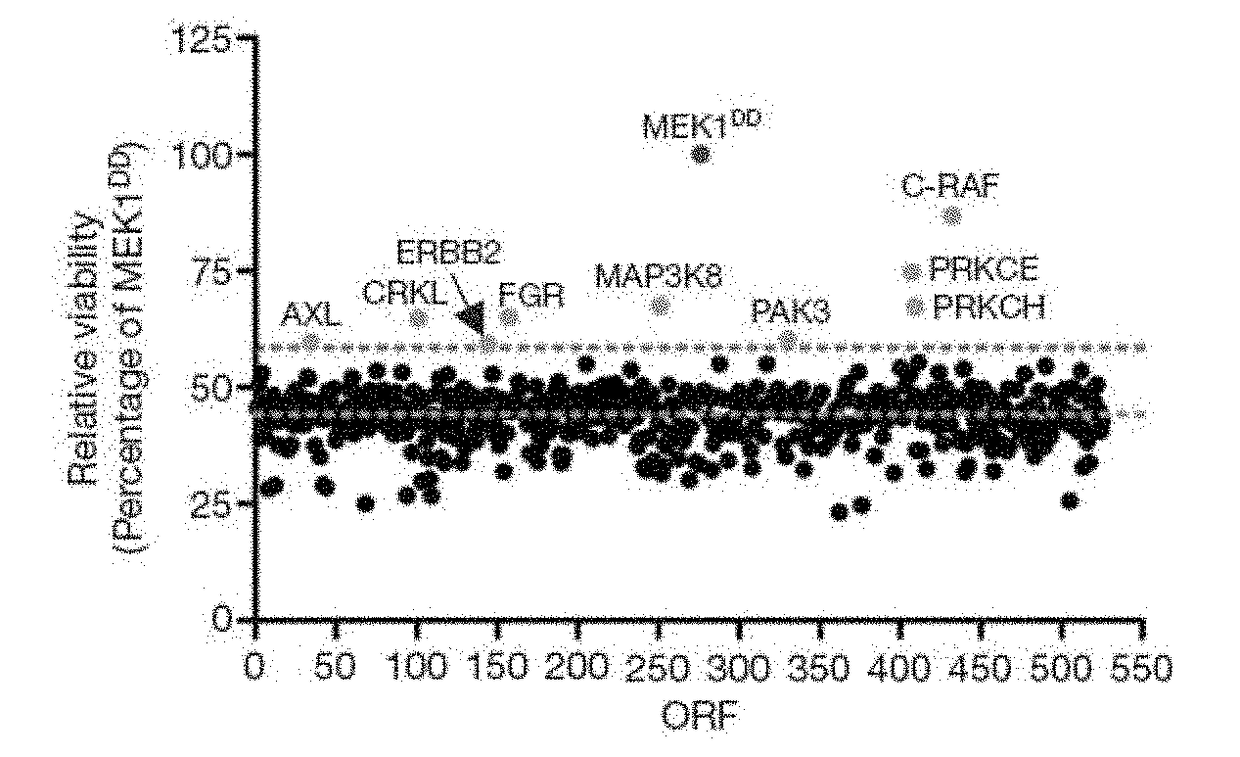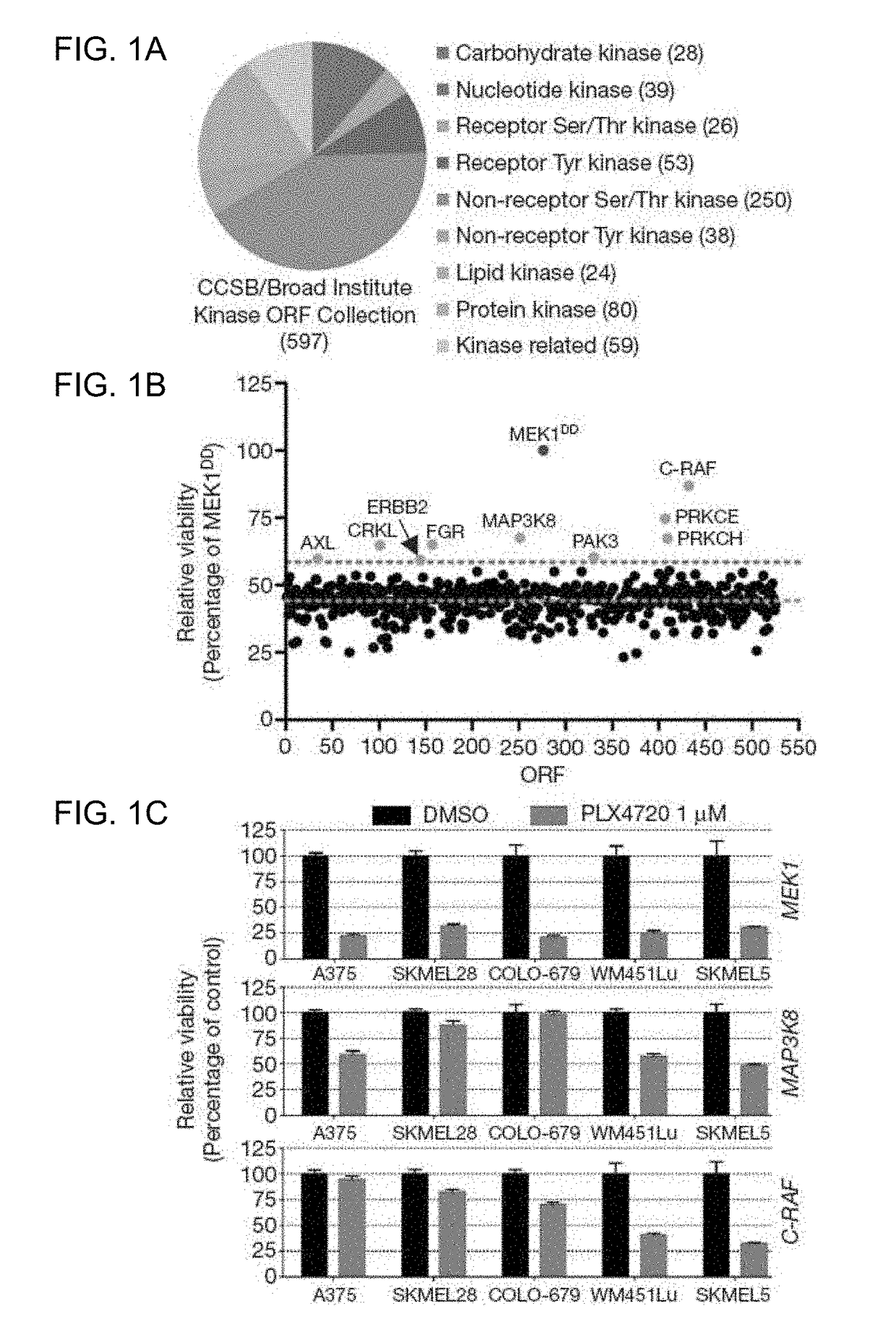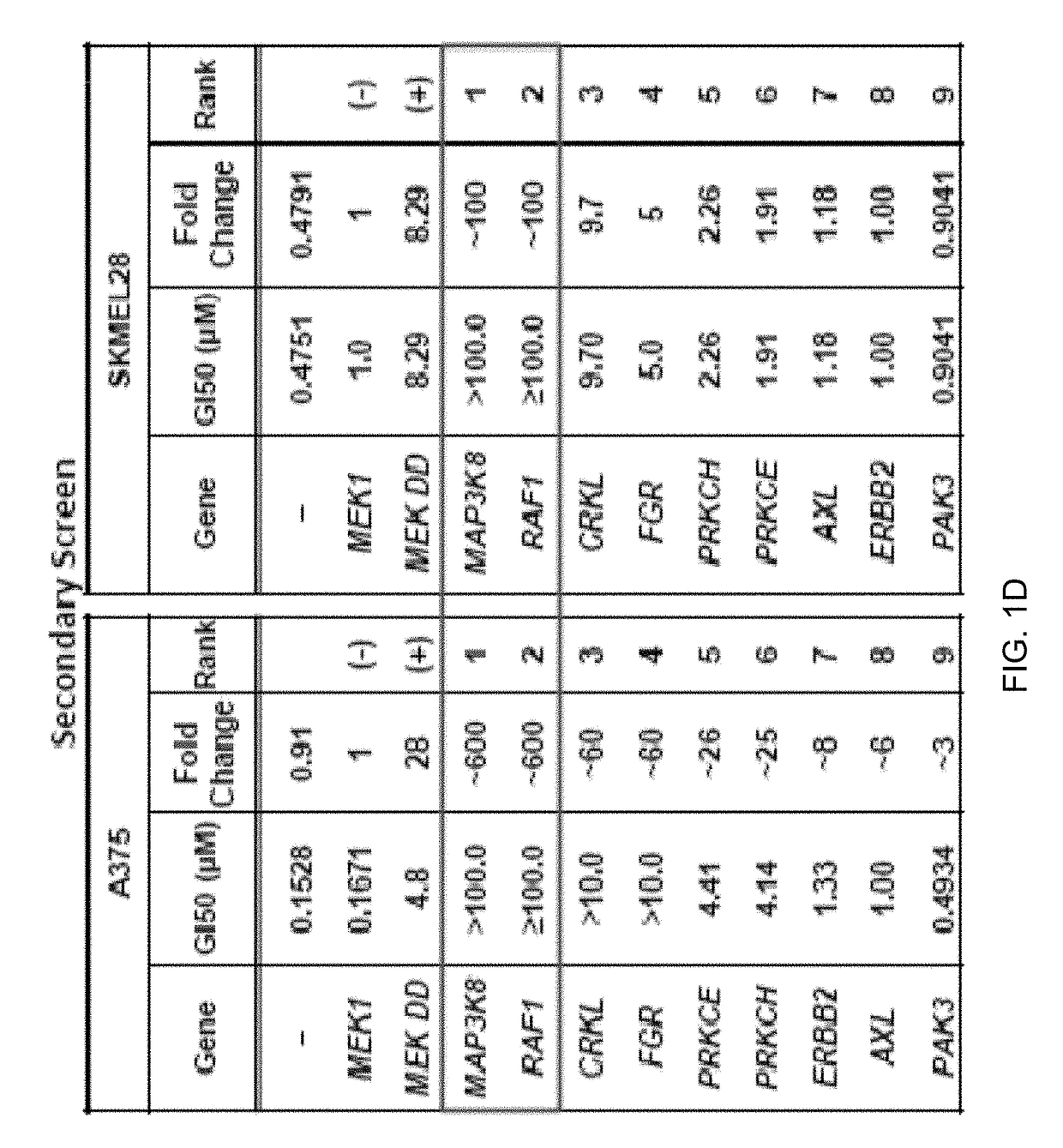Methods of Diagnosing and Treating Cancer in Patients Having or Developing Resistance to a First Cancer Therapy
a cancer and cancer technology, applied in the direction of drug compositions, instruments, transferases, etc., can solve the problems of de novo or acquired resistance in the clinical response to targeted anticancer therapy, and achieve the effect of effective long-term treatment strategies
- Summary
- Abstract
- Description
- Claims
- Application Information
AI Technical Summary
Benefits of technology
Problems solved by technology
Method used
Image
Examples
example 1
sed Functional Screen Identifies Specific Kinases as Drivers of Resistance to B-RAF Inhibition
[0104]To identify kinases capable of circumventing RAF inhibition, 597 sequence-validated kinase ORF clones representing ˜75% of annotated kinases (Center for Cancer Systems Biology (CCSB) / Broad Institute Kinase ORF Collection) were assembled and stably expressed in A375, a B-RAFV600E malignant melanoma cell line that is sensitive to the RAF kinase inhibitor PLX4720 (Tsai, J. et al. Proc. Natl Acad. Sci. USA 105, 3041-3046 (2008)) (FIG. 1a, 1b, Table 3, FIG. 6c). ORF expressing cells treated with 1 μM PLX4720 were screened for viability relative to untreated cells and normalized to an assay-specific positive control, MEK1S218 / 222D (MEK1DD) (Emery, C. M. et al. Proc. Natl Acad. Sci. USA 106, 20411-20416 (2009).) (Table 4 and summarized in FIG. 5). Nine ORFs conferred resistance at levels exceeding two standard deviations from the mean (FIG. 1b and Table 4) and were selected for follow-up ana...
example 2
e to B-RAF Inhibition Via MAPK Pathway Activation
[0106]Whether the overexpression of these genes was sufficient to activate the MAPK pathway was also tested. At baseline, COT expression increased ERK phosphorylation in a manner comparable to MEK1DD, consistent with MAP kinase pathway activation (FIGS. 2a and 10). Overexpression of wild-type COT or C-RAF resulted in constitutive phosphorylation of ERK and MEK in the presence of PLX4720, whereas kinase-dead derivatives had no effect (FIGS. 2a and 11). Thus, COT and C-RAF drive resistance to RAF inhibition predominantly through re-activation of MAPK signaling. Notably, of the nine candidate ORFs from the initial screen, a subset (3) did not show persistent ERK / MEK phosphorylation following RAF inhibition, suggesting MAPK pathway-independent alteration of drug sensitivity (FIG. 12).
example 3
ivation and Heterodimerization with B-RAF
[0107]C-RAF activation and heterodimerization with B-RAF constitute critical components of the cellular response to B-RAF inhibition. In A375 cells, endogenous C-RAF: B-RAF heterodimers were measurable and inducible following treatment with PLX4720 (FIG. 13). However, endogenous C-RAF phosphorylation at S338—an event required for C-RAF activation-remained low (FIG. 13). In contrast, ectopically expressed C-RAF was phosphorylated on S338 (FIG. 13) and its PLX4720 resistance phenotype was associated with sustained MEK / ERK activation (FIGS. 2a and 13). Moreover, ectopic expression of a high-activity C-RAF truncation mutant (C-RAF(W22) was more effective than wild-type C-RAF in mediating PLX4720 resistance and ERK activation (FIG. 14), further indicating that elevated C-RAF activity directs resistance to this agent. Consistent with this model, oncogenic alleles of NRAS and KRAS conferred PLX4720 resistance in A375 cells (FIG. 2b) and yielded sust...
PUM
| Property | Measurement | Unit |
|---|---|---|
| pH | aaaaa | aaaaa |
| pH | aaaaa | aaaaa |
| pH | aaaaa | aaaaa |
Abstract
Description
Claims
Application Information
 Login to View More
Login to View More - R&D
- Intellectual Property
- Life Sciences
- Materials
- Tech Scout
- Unparalleled Data Quality
- Higher Quality Content
- 60% Fewer Hallucinations
Browse by: Latest US Patents, China's latest patents, Technical Efficacy Thesaurus, Application Domain, Technology Topic, Popular Technical Reports.
© 2025 PatSnap. All rights reserved.Legal|Privacy policy|Modern Slavery Act Transparency Statement|Sitemap|About US| Contact US: help@patsnap.com



